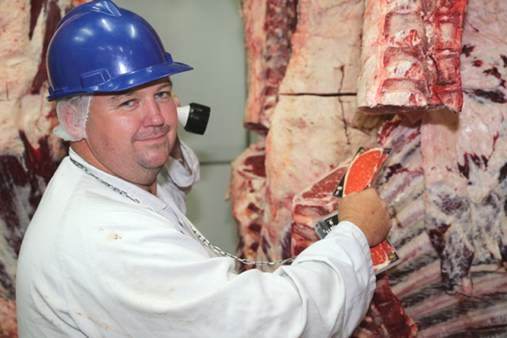
THERE”S been a sharp spike in interest among international trading partners around understanding the Meat Standards Australia grading system – at least partly driven by a growing appetite for chilled beef trade into the US over the next 12 months.
Meat Standards Australia program manager David Packer said there had been a distinct rise in inquiry from export stakeholders about Australian Beef brands and how the world-leading MSA program underpins these brands to provide consistent eating quality.
“Now that there are global beef supply issues emerging, it’s almost a perfect storm,” Dr Packer said.
Meat Standards Australia has been supporting Australian brand owners and processors in-market for some time, though now ever more so, responding to signals from export customers.
“MSA has been working more and more in international markets in building knowledge and understanding of MSA over the past year or two,” Dr Packer said.
An MSA team visited the United States last year working alongside the MLA International Markets team, conducting workshops and working closely with wholesalers, bigger food service and retail players, right down to individual chefs, to extend their knowledge of Australia’s program. Much of this work was being rolled out through MLA’s Aussie Meat Academy education program.
Other similar workshops have occurred face-to-face in South East Asia and Japan, plus countless online activities across Asian and US markets, Dr Packer said, often with Australian brand owners.
Part of the purpose was to encourage a move away from simply trying to compare USDA grading outcomes.
There has also been an effort made to build the confidence (and competency) of Australian beef brand owners to engage with overseas customers in talking about achieving consistent eating quality, rather than simply comparing grading systems. Part of this is through simplifying messaging regarding MSA grading and its unique benefits to underpin brand consistency.
“Now, with the emerging supply opportunity the Australian industry is seeing, there is even more demand to work alongside brand owners workshops to help educate their customers – not getting caught up in all the technical detail, but how their brands can provide consistent quality for both grain and grass product,” he said.
“It’s about providing assurances that if an overseas buyer purchases any well known Australian beef brand underpinned by MSA, they will get a consistent eating quality experience every time, as well as the value drivers of each unique brand such as sustainability, traceability, raising claims and other features behind Australian beef.”
Export customers often ask variations of the same question: ‘How does this Australian MSA product compare with USDA Choice or Prime Grade?’
MSA has been working on the development of a suite of supporting tools for beef brand owners, to help in this process. It is hoped these tools will be approved in the near future.
Prior conversations Beef Central has had with Australian meat traders have continually referenced export customers asking variations of the same question: ‘How does this Australian MSA product compare with USDA Choice or Prime Grade?’
The MSA tools aim to address that issue, without being interpreted as undermining or disrespecting the long-standing USDA grading system in any way.
The challenge in this is that the USDA and MSA grading systems operate in different ways, making direct comparisons and purchasing actions more difficult. USDA, a single point carcase assessment, makes no allowance for HGP use or hump height, for example.
Dr Packer said the current MSA supporting activities and workshops was not just focussed on the US market, but was being applied across a range of export markets.
“The good thing is, we had already made a big start in this work – it’s not as if we are having to draw something together in great haste, simply because the US is now showing more interest in Australian beef,” he said.
“We’re already set-up, and supporting those brand owners as the phones start to ring,” he said.
